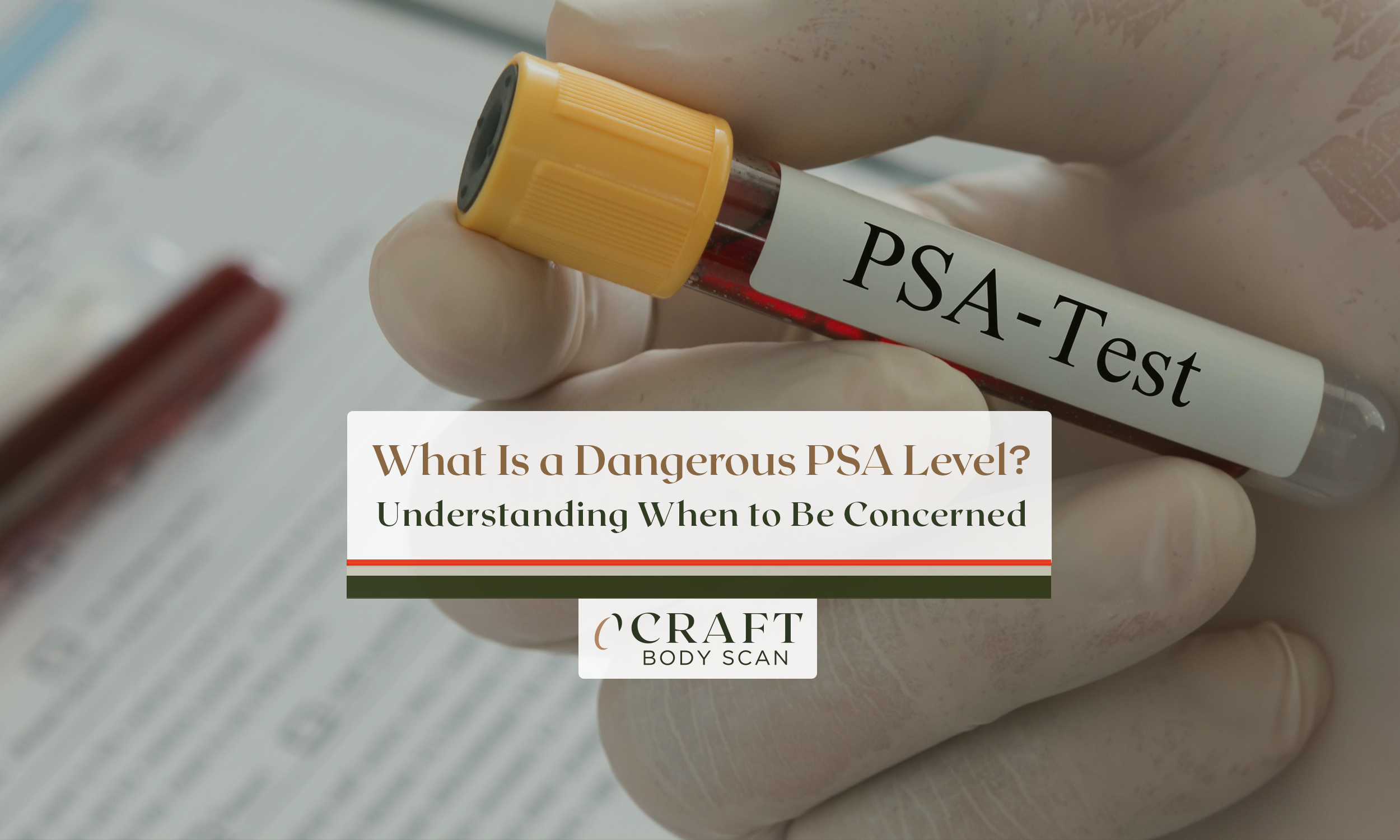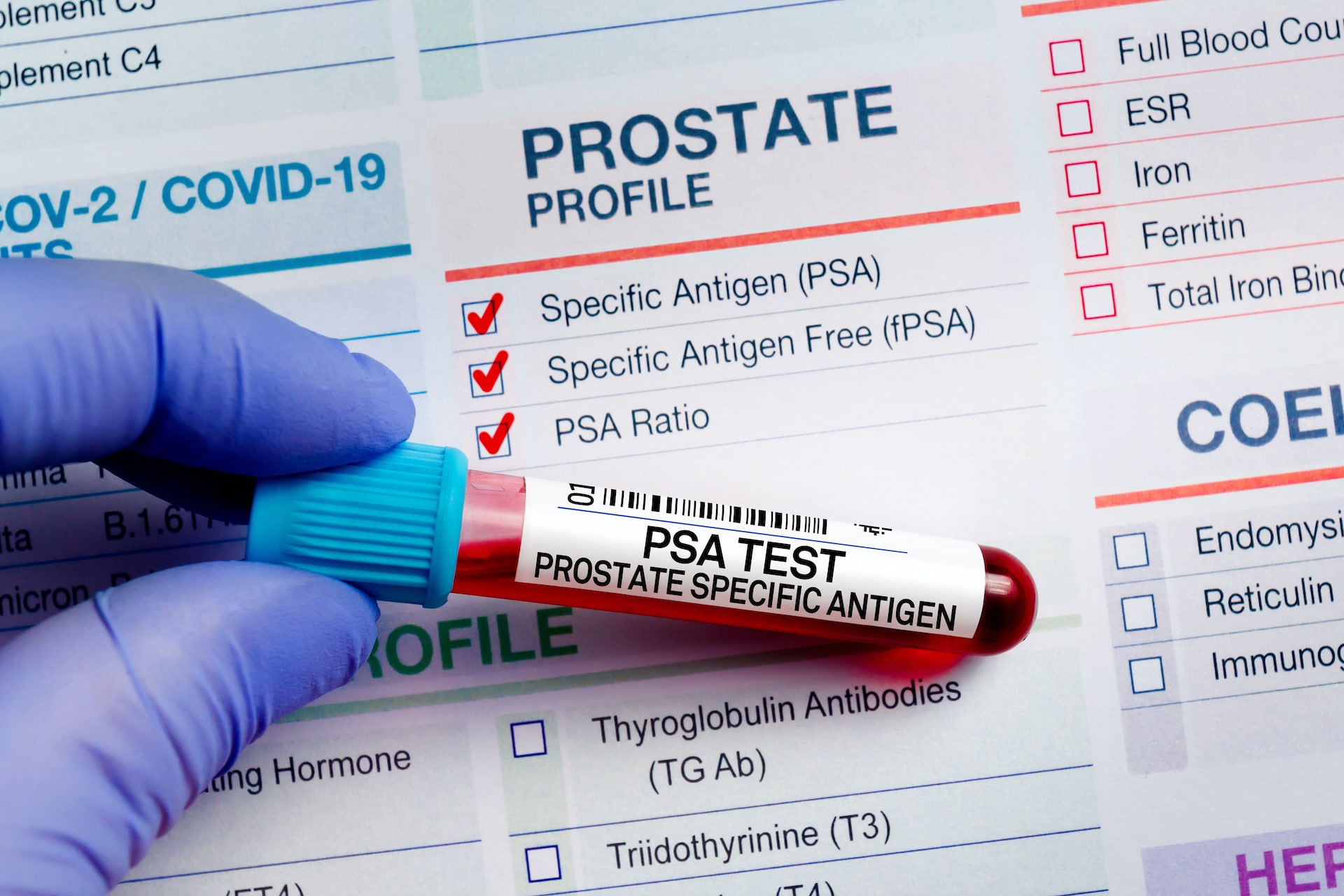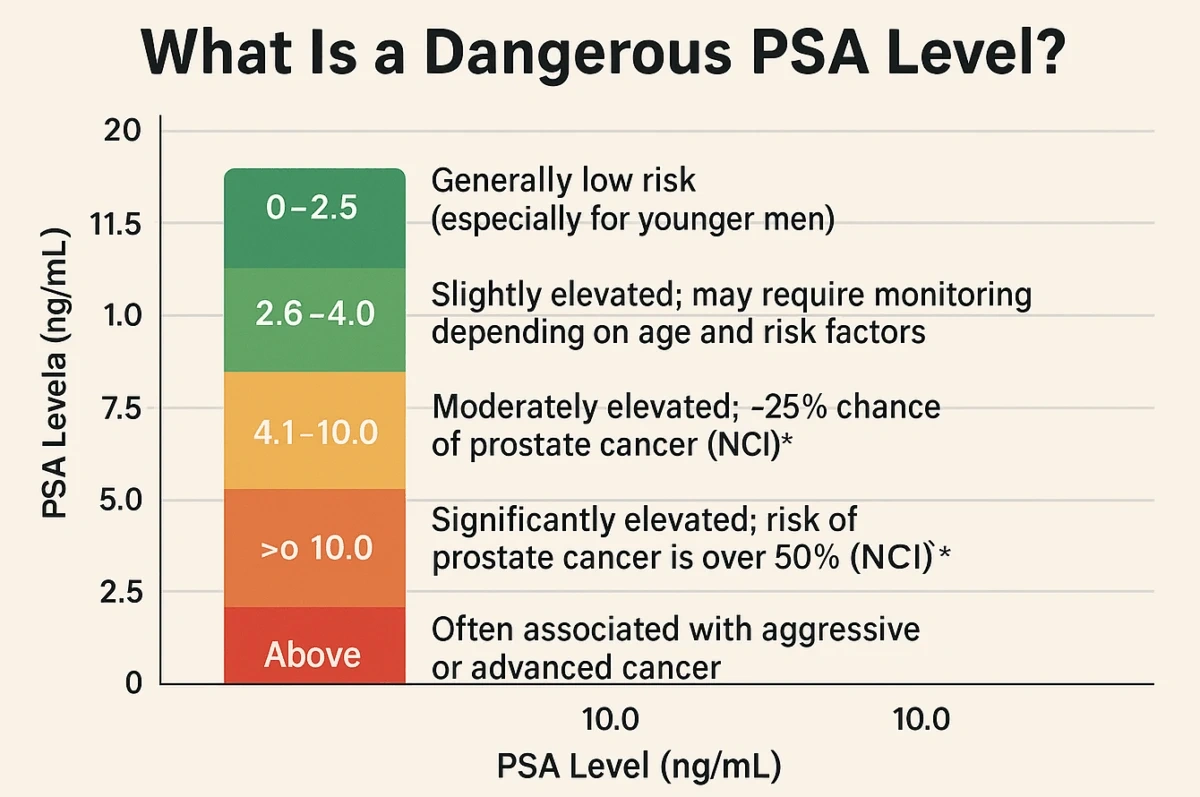When Numbers Make Your Heart Race
Let’s be completely honest. Nobody ever tells you how much a single number in a blood test can mess with your head… until you’re the one staring at it. You get that PSA result—maybe on a Tuesday, after a long weekend you wish you could repeat. Now, you’re Googling, calling friends, and maybe even losing a little sleep. What is a dangerous PSA level, really? Is it just a random threshold? Or is this the start of something bigger, something you have every right to worry about?
If you’re reading this and your mind keeps drifting back to that number—maybe it’s your dad’s, your partner’s, or your own—you’re not alone. Let’s break this down together, no white coats, just straight talk. Because this stuff? It’s too important for medical jargon and “don’t worry about it” to work.

Why Do PSA Numbers Jump?
So. You see a higher-than-normal PSA score and… your brain hits DEFCON 1. But hold on. Before you go full spiral, let’s just answer the biggie: PSA (prostate-specific antigen) is just a protein your prostate makes. It’s normal. It even helps keep things running smoothly for men. But it can rise for a bunch of reasons—and cancer isn’t always at the top of that list.
Real-Life: The Monday Bike Ride Freak-Out
Here’s something awkward but true: My neighbor once panicked over his “sky-high” PSA after a charity bike ride. He’d pedaled for hours, celebrated with pizza, and then had blood drawn early Monday. The result? An elevated PSA that scared the heck out of him and his family for a week… until the next test came back normal. So yeah, recent exercise, infections, even sex (seriously!) can push those numbers up temporarily according to MD Anderson.
:max_bytes(150000):strip_icc()/2782267_color-5baa944e4cedfd00252b40ca.png)
What Else Could It Be?
Let’s run through a quick-and-dirty list. A PSA spike might mean:
- Prostatitis (that’s prostate inflammation—can feel like you gotta pee all the time, plus aches)
- Benign prostate enlargement (BPH, super common as guys get older—it’s not cancer, just annoying)
- Urinary infections
- Vigorous cycling, recent sex, or even just the aging process
- Yup, sometimes, it does mean cancer—but slow down before you assume the worst
See where I’m going? Numbers matter… but context matters more.
What’s a “Dangerous” PSA Level, Anyway?
Okay, let’s talk numbers. We all want the magic number that separates “no big deal” from “uh oh.” But like life, it’s rarely that simple.
The Ballpark Guidelines for PSA
Doctors (and all those smart folks who write textbooks) generally agree:
| Age Range | Normal-ish PSA (ng/mL) | Time to Worry? |
|---|---|---|
| 40-49 | 0-2.5 | >2.5 |
| 50-59 | 0-3.5 | >3.5 |
| 60-69 | 0-4.5 | >4.5 |
| 70-79 | 0-6.5 | >6.5 |
(Seriously, bookmark or screenshot this—we forget stuff faster than we realize.)
Still, most places agree a PSA level above 4 ng/mL will turn your doctor’s head—especially if you’re in your forties or fifties. But here’s where it gets wild: for seniors, the “normal” range actually goes up. That’s why older gents should keep this psa level chart for seniors handy. It’ll save you a freak-out or two.
But What’s “Dangerous-Dangerous”?
Ready for a truth bomb? Most doctors call a PSA above 10 ng/mL the “danger zone”—not everyone agrees, but that’s a solid anchor—for one simple reason. At this level, there’s about a 50% chance something malignant is going on MD Anderson breaks it down. Rates above 20 ng/mL? Let’s just say, the odds of cancer go way, way up. It’s not an automatic cancer diagnosis… but it’s definitely more “Get to a specialist ASAP” than “Eh, let’s see next year.”
Example: When a Number Is More Than a Number
Ever heard of the phrase “velocity matters”? If your number jumps from, say, 2.5 to 9 in a year, that’s a red flag. Steady climb = more concern. A neighbor of mine (let’s call him Mike) watched his PSA double in six months. He was only 55. Because they caught it fast, he treated it early—and he’s still grilling steaks for the block party every Fourth of July. Catch fast, act fast. No shame, no blame, just action.
What If You’re In The “Maybe” Zone?
Confused because your PSA is, like, 5.6 or 7? Yeah. This is murky territory—a.k.a., “The PSA Twilight Zone.” Not obviously cancer, not clearly safe. This is when context, trends, and personal health history are your best friends.
Should You Worry About a PSA of 5.6?
Here’s a link for more folks wrestling with exactly this: my PSA is 56 should I worry. The reality? For a guy in his late 70s, 5.6 ng/mL might just be fine. For someone 50-ish, especially with a family history? You bet your bottom dollar your doctor will want a closer look.
Stacking decades, medical history, and family stuff together paints a richer picture. It’s not just the number—it’s the story behind it. (Kind of like looking at your high school yearbook: what really matters isn’t just the photo… it’s who you were, what was happening, and what came next.)
Tracking Trends Beats One-Offs
One number = a snapshot. A trend = a movie. And movies tell a lot more truth. If your PSA keeps creeping up—even if it’s gradually—this might be the time for some extra testing. Rapid changes, like doubling in a year, tend to worry docs more than steady, slow growth based on expert guidelines.
A Small Story: The Weekend That Changed Everything
One Sunday, my friend’s dad (let’s call him Rick) finally admitted he’d skipped three years of checkups. His wife nudged him, he got tested, and—whoops—there it was. A PSA that had quietly crept from “borderline” to “uh-oh” territory. They caught early cancer, treated it, and yeah, the story could’ve gone way differently if he had stayed in “well, probably fine” mode. Sometimes, life just needs that little nudge.
Why “Normal” Isn’t the Same for Everyone
This is where things get complicated, but stick with me. Your risk factors change the whole equation. African American men? Higher risk, so doctors get serious sooner as the American Cancer Society points out. Dad or brother had prostate cancer young? Start screening in your early forties, maybe even late thirties. A family history doesn’t just nudge you into the doctor’s office. It can be a life-saver.
Here’s a pro tip for guys over 65: Don’t just Google “average PSA.” Use the psa level chart for seniors—it’ll give you a realistic bar to measure against men your age. The right info calms your nerves (and maybe your spouse’s, too).

What to Do When Your PSA is High
Take a breath. Sip some water. Now—what next?
Talk, Don’t Assume
Your doctor isn’t just looking at the PSA; they’re weighing your whole story. Got a cold? Battling a UTI? Took a long bike ride? These are worth mentioning. Sometimes, just retesting a week later fixes everything. I can’t tell you how many guys I’ve talked to who panicked, then got a totally normal result on Round Two.
What to Ask the Doc
- “Could anything I did—sex, working out, biking—affect this PSA?”
- “Should we retest or wait?”
- “Does this fit with my age/history?”
- “Should I look at the psa level chart for seniors for what’s normal for my age?”
- “What’s the next step if it stays high?”

It’s Not Always Cancer (Big Relief, Right?)
From BPH to prostatitis to good ol’ aging, your PSA can blow past “normal” and mean nothing sinister. According to Cleveland Clinic, most high PSA tests aren’t cancer at all! Sometimes, you just need to wait, retest, and skip the stress for a month.
If You’re Still Worried…
Don’t be shy. Check out the real-world advice on my PSA is 56 should I worry. There are plenty of stories from guys who’ve been exactly where you are, and came through just fine.
The Bottom Line: Numbers Matter, But They’re Not Your Fate
You made it. We’ve talked through the fears, the confusing charts, and the “What now?” moments. Here’s what’s real: numbers count, but your story matters more. The danger line for PSA? That’s generally around 10 ng/mL or above—but anything over 4 can mean it’s time to get curious. And if you’re a senior, don’t panic—just check that psa level chart for seniors or share your worries with your doc. Courage matters more than stoicism here.
Here’s my ask—don’t sit on those results, don’t go it alone. Grab a cup of something you love, breathe, and make that call. Talk to your doctor. Ask all the “dumb” questions (they’re not dumb!). Take your friends or family with you if it helps. Early action, even if it feels awkward, can make a world of difference. So what do you say? Let’s catch these things early and keep living well… because that’s what you (and your prostate) deserve.


















Leave a Reply
You must be logged in to post a comment.